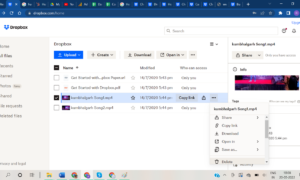React Native is a cross-platform development library from Facebook. It helps us create an app for multiple platforms like iOS, Android, Web, TVOS, etc.
Moreover, it was developed in 2013 and uses simple JSX and JavaScript to build apps with superior speed and performance.
Building mobile apps with React Native helps boost your business by producing apps with native-like functionalities.
React Native is adopted by many businesses (Uber, Microsoft, Airbnb, Instagram, Skype, etc.) from almost all industries. It helps them build their own customized app with stunning features.
2021 is the perfect year for React Native popularity growth. Its versatility, reach, and stable growth are the main reasons why it is popular.
Why React Native?
React Native offers a great many advantages that include quick development time, cost-efficiency, consistency, fast refresh, etc. Hence, it brought a revolution to the technology industry.
Apps built with React Native offer native looks and feels. It’s getting popular because it helps to save time; doing coding work once is enough to create both iOS and Android apps.
The one attractive feature of React Native that lures many developers is the single codebase. It can create an app for several platforms without wasting time and energy on building two codebases.
Additionally, it helps in developing simple yet effective user interfaces that are responsive to ensure a good user experience.
Now that we have seen why React Native is the best framework out there, it’s time to jump into how to create your first React Native app.
6 Essential Steps to Build an App with the React Native Framework
React Native assists a developer to perform magic in the app development process to deliver the app you exactly look for. These are the important steps that will help you create a simple React Native app.
Step 1: Install Expo
The first step in building mobile apps with React Native is to install Expo.
Expo is a widely-used framework and a platform for universal React apps.
It is equipped with all the required tools and services that help build an app. Besides, it supports the same JavaScript or TypeScript to deploy the app on the iOS and Android platforms. An experienced developer would always choose Expo because its effective Expo CLI (opens in a browser) helps in getting the app’s development status.
- It offers a set of ready-made solutions that assist in working with a device’s accelerometer, camera, notifications, geolocation, etc.
- It is easy to update the app without any repeated deployment on the Google Play Store or Apple Store.
Step 2: Create your own React Native app.
After installing and setting up the Expo, it will automatically bring out all the necessary information for you.
Always take a look at the directory structure to monitor the activities of app development.
Since Expo eliminates some barriers in the front-end development segment, it speeds up the process to a great extent.
For effective app development, add some attractive features like push notifications, click-the-button, good UI design, user registration, innovative animations, etc.
Besides, adding components like Alert, Animated, CameraRoll, Dimensions, ActivityIndicator, WebView, StatusBar, Keyboard, etc. improves the user experience.
Step 3: Run your React Native app.
Now comes the third step; by this time, you will see a new React Native project. It will load and show you the app in the Expo framework only if you finish the setup stage properly.
Yup, you have successfully started to build your React Native app.
Now run the required commands, and you are good to go for the next step.
FYI, ToastAndroid, ViewPagerAndroid, DatePickerAndroid, PermissionsAndroid, and TimePickerAndroid are some components used in developing an Android app.
And ActionSheetIOS, AlertIOS, PushNotificationsIOS, and SegmentedControlIOS are the components used in iOS app development.
Step 4: Adding components and UI
This step involves writing our own user interfaces. Moreover, other basic components like text, image, text input, style sheet, view, scroll view, etc. should be added in this step.
For a good functioning of the UI, use the simple components: picker, slider, button, switch, etc.
If you are developing an app that sells a product, you can use a flat list and sectionals to segregate the products into separate sections. This will help your customers access a product easily without searching the whole app.
”The devil is in the details, so you need to be focused on every small detail in each stage of the development process. This is the proven way that your app will be of good quality without any functionality issues.
Step 5: Add designs or styles you need.
Now, your app should have core functionality. Let’s now focus on the design of the app.
This step will be your cup of tea if you are handy in CSS. How to style and design the app will be easy for you.
There are unlimited components and APIs you can add. Make sure you have completed other tasks, like fixing the app’s color scheme, determining the animations, etc., by now.
Nowadays, there are hundreds of apps with a motive and niche. You need to develop an app with creative features to be successful.
Step 6: Test the app:
This is the final step: review the app thoroughly. Moreover, testing the app improves the quality and helps to make sure there are no bugs or issues.
Now, launch the app on the respective platform.
These steps will be useful in developing a simple app. However, a more advanced app with some awesome features requires an expert.
Build your first mobile app using these effective guidelines. The above steps will surely help you in the app development process, provided you have enough time, patience, and some basic technical knowledge.
Besides, building a React Native app without any prior experience and the required tools is an impossible task. Also, the efforts you spent on that process can be very valuable to you if you focus on your actual business.
That’s why I recommend hiring one of the best React Native development companies.
Leading React Native development company
Soft Suave is an award-winning
native app development company. We are specialized in the React Native framework and have over 8 years of successful working experience.
Moreover, our unique feature is the way we connect and work with our clients. With a good client retention rate of 93%, we are focused on building a strong and long-term professional relationship with our clients.
We have all the essential resources, such as software tools, programs, etc., to develop any kind of React Native app.
Our dedicated team of developers is skilled and experienced in working with React Native projects.
Wrapping up
Although these steps will be helpful in developing your first React Native app, you cannot produce an app that is perfectly customized for your business. So, it’s always a good choice to seek out the help of a professional developer or app development company that is much better.
If you are determined to develop cross-platform apps for your business, React Native is the perfect choice for you. It gives you the option to target and reach more customers.
Having an app that works on both iOS and Android devices is always better. It gives you an edge over your rival competitors by bringing in more customers into your sales funnel.
Why wait? Get a 30-minute free consultation from us and start your app development journey.







